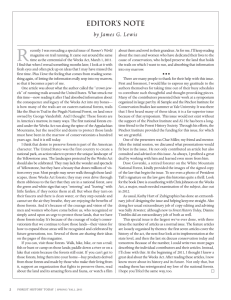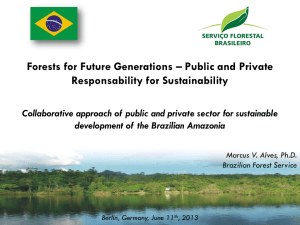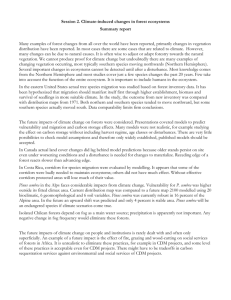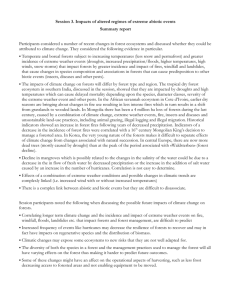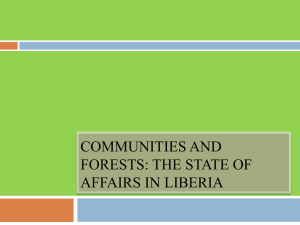climate_change_and_the_green_india_mission_
advertisement
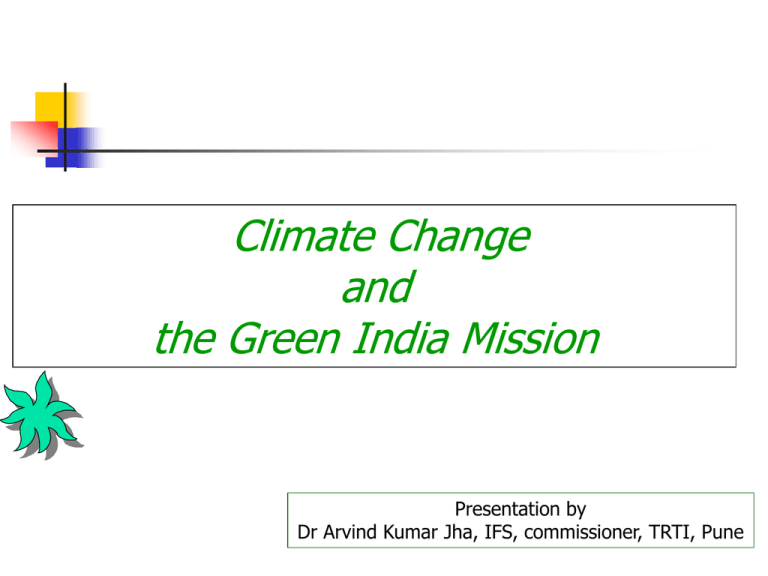
Climate Change and the Green India Mission Presentation by Dr Arvind Kumar Jha, IFS, commissioner, TRTI, Pune Missions under National Action Plan on Climate Change (NAPCC) National Solar Mission, National Mission on Enhanced Energy Efficiency, National Mission on Sustainable Habitat, National Water Mission, National Mission for Sustaining the Himalayan Ecosystem, National Mission for a Green India, National Mission for Sustainable Agriculture, National Mission on Strategic Knowledge for Climate Change. Climate change challenges : Impacts on forests and local communities • More than 50% of the vegetation predicted to be less optimally adapted to its existing location by 2085 • The forests vulnerable on account of the altitudinal and latitudinal shift of the species ; increased occurrences of fire , pest /diseases and invasive species. • Changes in species assemblage/forest type, NPP, forest die back and loss of biodiversity. • Forest dependent livelihoods may get severely affected , enhancing vulnerability of local communities. ( Stern 2007) Green cover & its contribution •Forests meet 40% of overall energy needs and 80% of rural energy needs (NAPCC document) •Change in carbon stocks in India forests ( Million tons) 1995= 6245 , 2005=6622 •Annual increment = 38 Million tons of C ; 138 Mt of Co2 (Source: SFR 2009) •CO2 Removal by India’s forests and tree cover : 11.25 % of total GHG emission 1994; 9.5% in 2000; 6.53% in 2010 & 4.87% in 2020 (ICFRE 09) Making Mission a Peoples Program The Mission is engaging an array of stakeholders to participate in finalizing Mission interventions. …..Public consultations at design stage itself marks the beginning…. “Mission Greening” in the context of climate adaptation and mitigation enhances ecosystem services like carbon sequestration and storage (in forests and other ecosystems) enhances biodiversity enhances resilience of the ecosystems enhances provisioning services like supply of fuel, fodder, small timber, and NTFPs helps adaptation of forest dependant local communities in the face of climatic variability Underscores intricate linkages of forests with: •food security (linkages with agriculture) •water security •energy security •livelihood security of local communities ..Mission in an unique position , to significantly contribute to sustainability of other missions.. Sub Missions •9 Sub Missions ( each of the out puts developed as sub mission) •Cross cutting interventions The core principles Mission just not about afforestation, equal emphasis on restoring natural ecosystems like grassland and pastures, mangroves and other critical ecosystems ; as well as forests in urban/peri-urban landscapes. contribute in protection/enhancement of forests having relatively less dense forest cover. restoration of native bio-diverse species mix. local communities to play a key role in prioritizing range of ecosystem goods and services, empowerment of communities and strengthening of decentralized local governance of forests. The Key Strategies…… integrated approach that treats forests and non forest public lands as well as private lands simultaneously, in the project unit / sub-landscape / sub- watershed / watershed area Drivers of degradation, e.g. firewood, small timber needs , livestock grazing to be addressed using cross sectoral convergence overarching criterion for area selection to include: vulnerability to climatic projections , potential of areas for enhancing carbon sinks, critical habitats and corridors etc. Means to achieve the Mission targets/outcomes • Making the Mission a people’s program •Empowering local community institutions for decentralized forest governance •Strengthening capacity of SFD/line agencies • Improving investment climate for planting and forest conservation for all agencies • Improved monitoring at outcome, evaluation at impact level, evaluation by third party, certification to be introduced • Research in support of the Mission goals and objectives Mission Organization National: MoEF Responsibility: An Advisory Council Chaired by MEF to provide overall guidance at national level; A Steering Committee for direction and management , the Mission Directorate to be serviced by NAEB State: State Forest Deptt responsibility: A State Steering Committee Chaired by CS having cross sectoral representation; PCCF as Member Secretary. SFDA to house State Mission Directorate Mission Organization District : Forest Development Agency, with linkages with District Planning Committee Village level: Planning and implementation to be vested with local level bodies : JFMCs, VPs, linkages with Gram Sabha appointed committees under Forest Rights Act provisions. Urban area: Ward committees; link to MC and Municipality. Mission Outputs in 10 years: • 2.0 m ha of moderately dense forests show increased density and regeneration • 4.0 m ha of degraded forests regenerated and sustainably managed • 2.0 m ha of degraded scrub/grasslands restored and put under sustainable multiple uses • 0.10 m ha of mangroves restored/established • 0.10 m ha of wetlands show enhanced conservation status • 0.20 m ha of urban/peri -urban forest lands and institutional lands are under tree cover • 1.50 m ha of degraded agricultural lands and fallows brought under agro forestry • 0.10 m ha of corridor areas, critical to wildlife migration are secured • Improved bio-fuel use efficiency devices adopted in about 10 million households (along with alternative energy devices). Biomass/NTFP based community livelihoods enhanced to reduce vulnerability TENTATIVE MISSION COSTS Sub Mission costs : 32,000 crores Support Interventions:12,000 crores Total : 44,000 crores Thanks email: dr_arvindjha@yahoo.com

